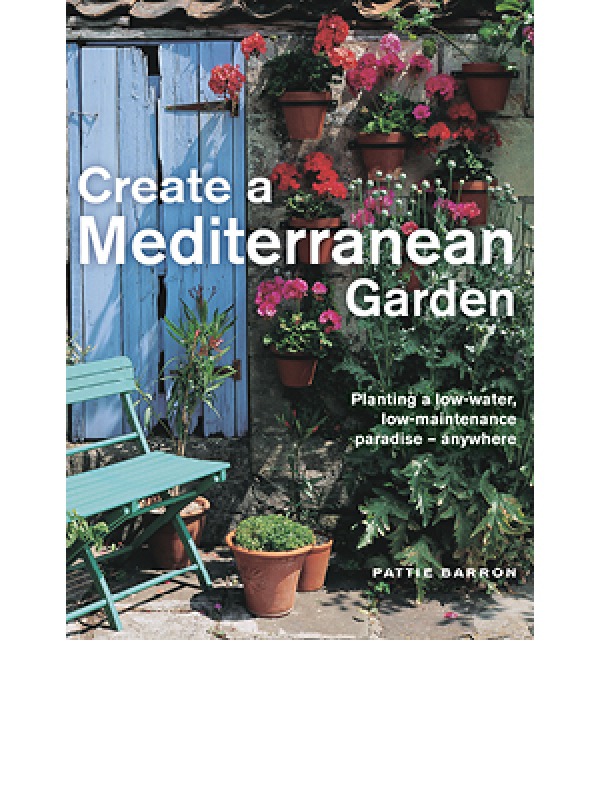
Create A Mediterranean Garden by Pattie BarronLorenz Books, 9780754835240 £15 UK
Join Our World... Sign up for our exclusive newsletter.

Be inspired every day with Living North

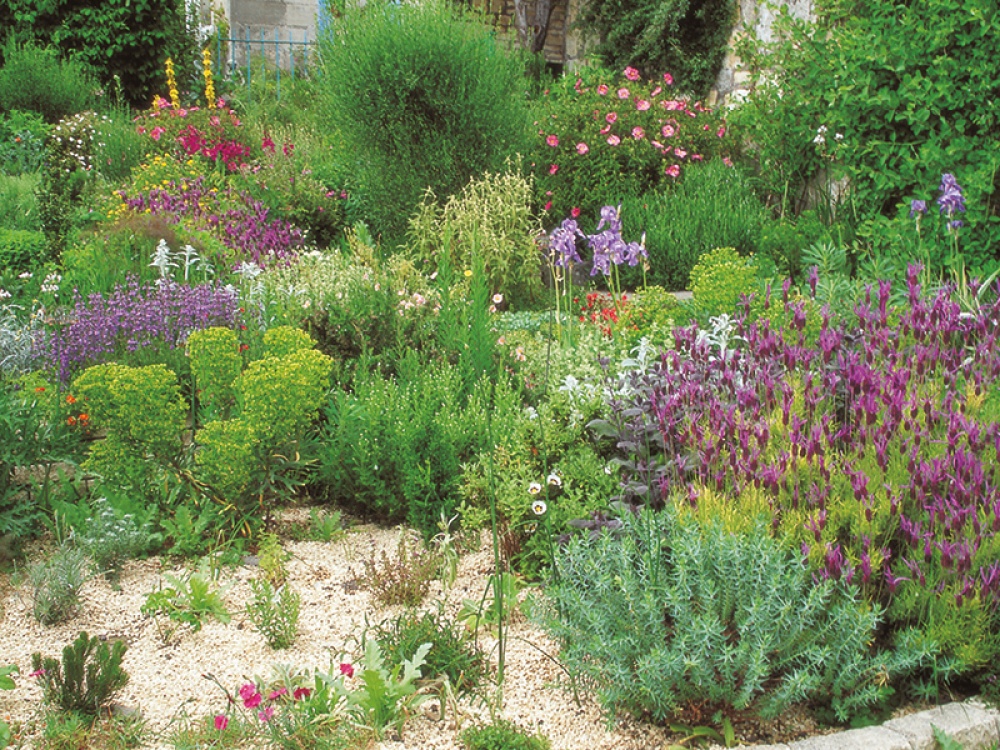
Getting the soil into shape Mediterranean plants grow in poor, stony soil in the wild, so that is exactly the environment you need to re-create in your Mediterranean garden. The French lavender that you admire in the herbaceous border originated on a Provençal hillside where the terrain is tough and rubbly. Not only does that lavender look completely at home in stony ground, but it feels at home, thriving in the drainage that gritty, stony soil provides. Mediterranean native plants hate getting their roots too wet: compacted, heavy soil holds water, so presents the worst hazard. While other gardeners’ groundwork is all about enriching the soil, your groundwork is all about digging in gravel, shingle or grit to improve the texture. Don’t be tempted to feed your Mediterranean plants or enrich the soil they are in, because the result will be weak, sappy growth. If your soil is excessively poor and dry, you might need to work in some organic matter to improve its ability to retain water.
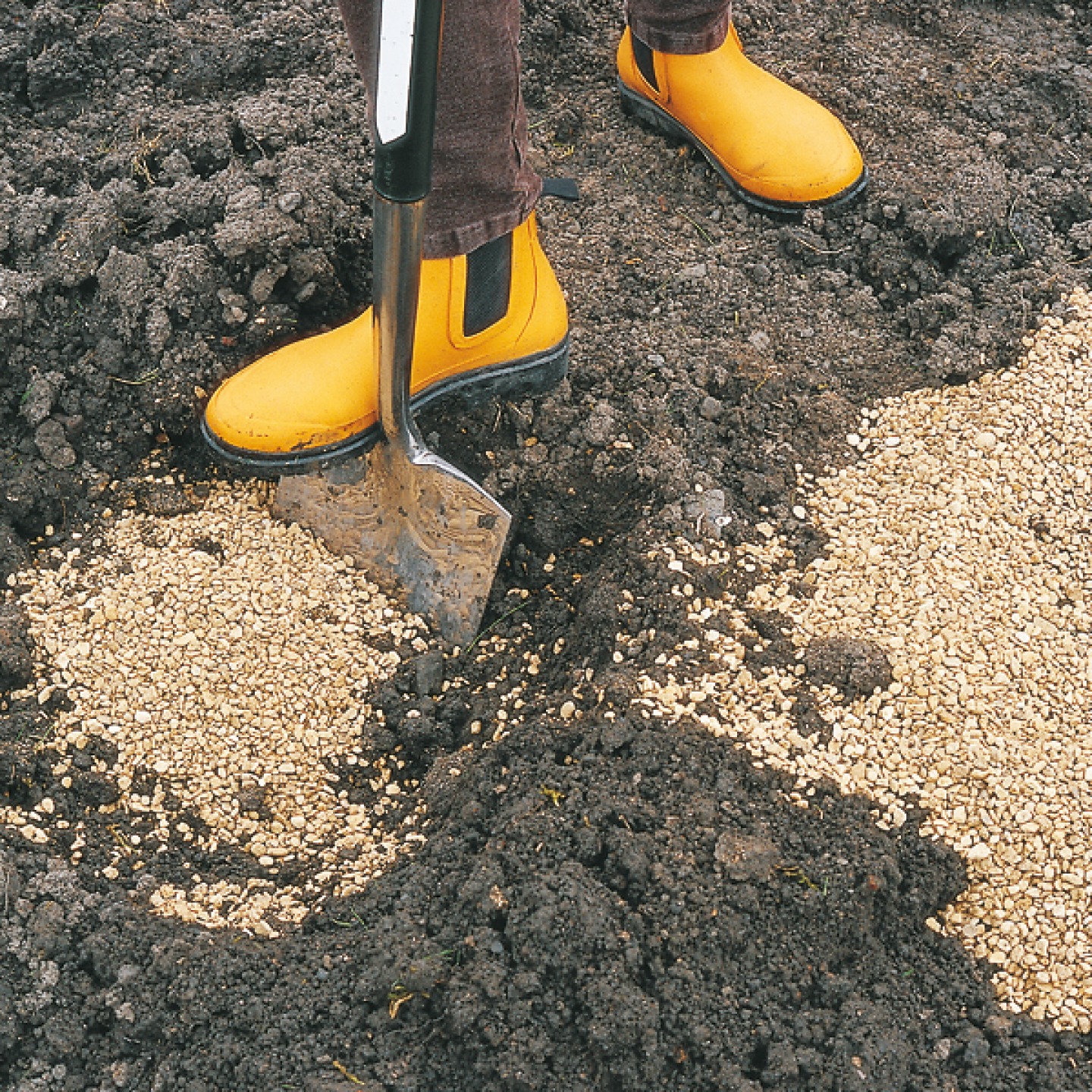
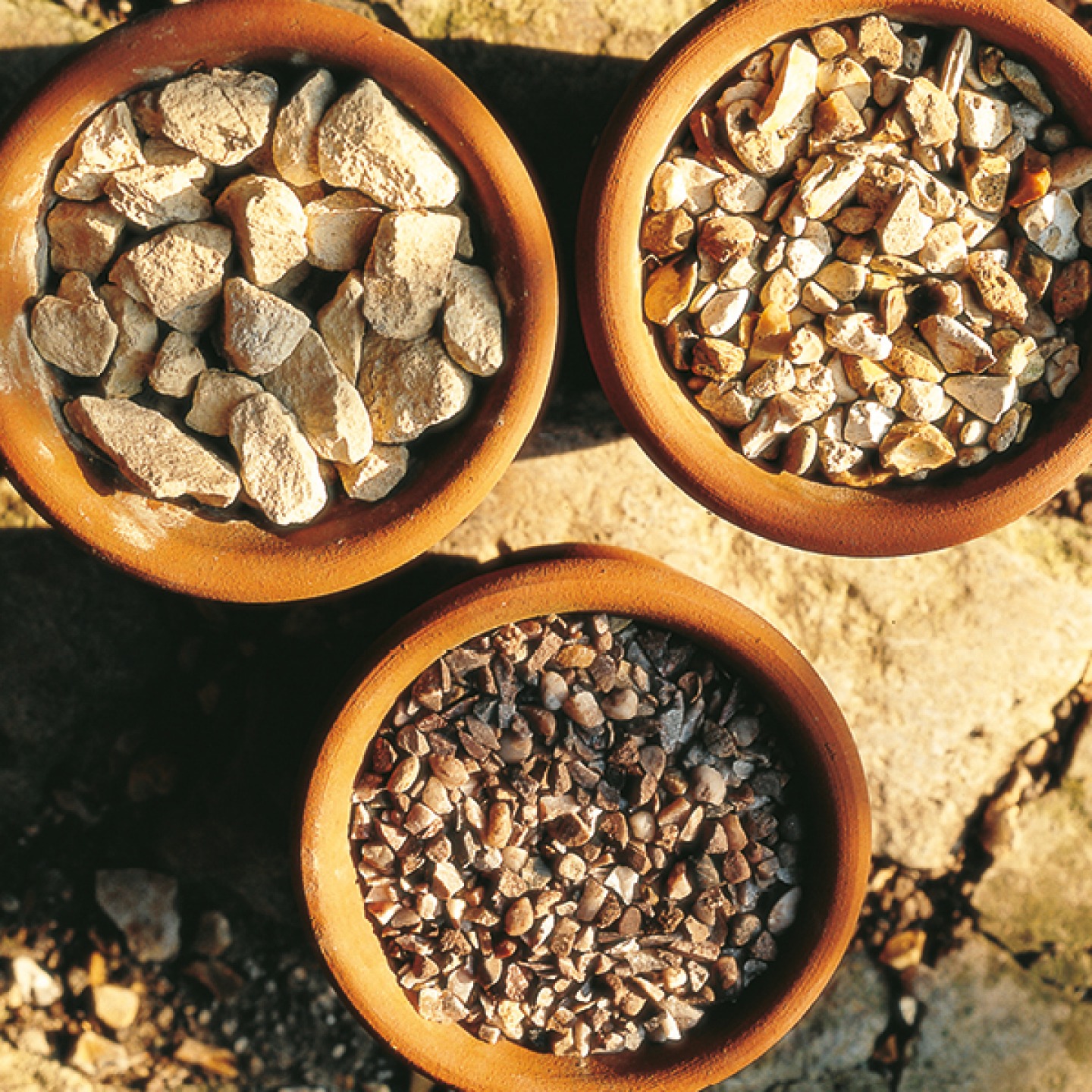
PREPARING THE SOIL
Although labour-intensive at the time, good soil preparation is essential and will ensure a trouble-free garden for years to come. The basic process is turning gravel or pea shingle into the soil, as shown below. If your soil is compacted or heavy clay, you will need to work that much harder to break it down and mix in the gravel, so go slowly, taking it section by section.
1 When the soil is not wet or frozen, dig the whole area in a series of trenches, working backwards so that you do not compact the section you have worked. Throw gravel across each dug section.
2 Turn the soil over from the next section on to the gravel, breaking up the earth as you go. Depending on the size of your trench, you may well have to use several spadefuls of gravel.
3 Work the gravel well into the soil. This will be hard work if your soil is clingy and clay-based4 When you have worked over the whole area, the soil should have a crumbly consistency.
YOUR SOIL’S BEST ALLIES: STONE AND SHINGLE Gravel is simply stone chippings that are cut from large rocks in a quarry. You can also use pea shingle, dredged from river beds: this is similar in size and shape but the edges have been eroded over time by water, so the stones are smoother and rounder. The advantage of using chippings is that, if your garden is plagued by slugs or snails, they will be more effectively deterred by the sharp, inhospitable edges of the stones. For mulch, choose a pale colour to provide contrast with the plants, but mix in occasional stones of varying shades – and larger sizes – to make the finished effect more natural.
HOW MUCH GRAVEL?
However much you think you need, you’ll need lots more. You can never have too much gravel for a Mediterranean garden, as texturizer and mulch, to a depth of approximately 5cm/2in. A ton seems like a huge amount, but you will be surprised how quickly it goes.
WHAT SIZE STONES?
The right size gravel to mix into your soil is between 6mm/¼in and 10mm/½in, the size of a small, flattened pea; use the same gravel as a mulch. It is cheapest to buy in bulk from builders’ suppliers, although garden centres and DIY stores stock gravel conveniently bagged. For smaller alpine-type plants and as a mulch for container plants, a coarse grit of about 4mm/¹⁄6in is appropriate. To complete your stock of stone, coarse stone chippings are useful for scattering over a mulch to create a natural effect, and for placing at the base of containers to improve drainage. Soft limestone chippings crush over time, but give the right setting for Mediterranean plants, which grow on limestone in their native habitat.
USING GRAVEL AS A MULCH
There are several good reasons to go for gravel as a mulch: it insulates plants; it holds in water for longer, reducing evaporation from the soil; it reflects sun back on to the plants; it makes a plant-flattering backdrop; it stops the crowns of plants from rotting in prolonged wet weather and keeps mud splashes off. As if that wasn’t enough, gravel also makes the spaces between plants look good in a way that bare earth cannot, so that instead of conventional tight planting, with everything cheek by jowl, special plants can be grown in isolation to show them to advantage; grasses and light, airy plants, especially, look good set out in this way. The overall effect is more natural.
Planting the Mediterranean garden Planting in the traditional garden often involves arduous digging in of manure and fertilizers, followed by diligent watering until the plants are established. In the Mediterranean garden, by contrast, so long as you have begun by mixing plenty of gravel with the soil, very little further work is needed, and wherever your spade strikes, it will sink into well-drained soil. Planting is a pleasure because it is so easy and so quick. Because Mediterranean natives are habitués of poor soils, they do not need pampering with feeds and fertilizers. Manure is anathema to them and will simply make their growth sappy. Herbs are at their most aromatic and flavourful not only sited in sunny locations, but growing in undernourished soil.
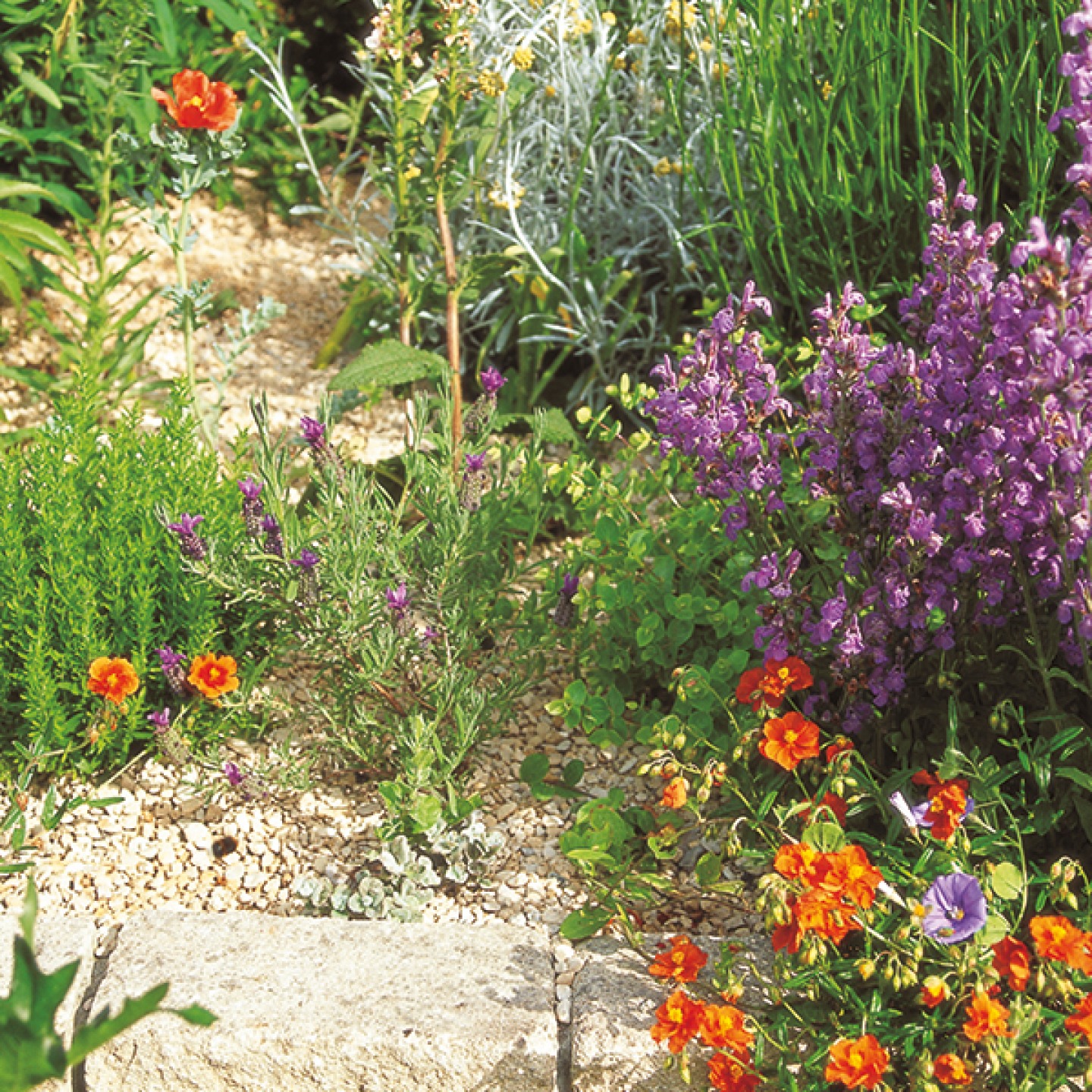
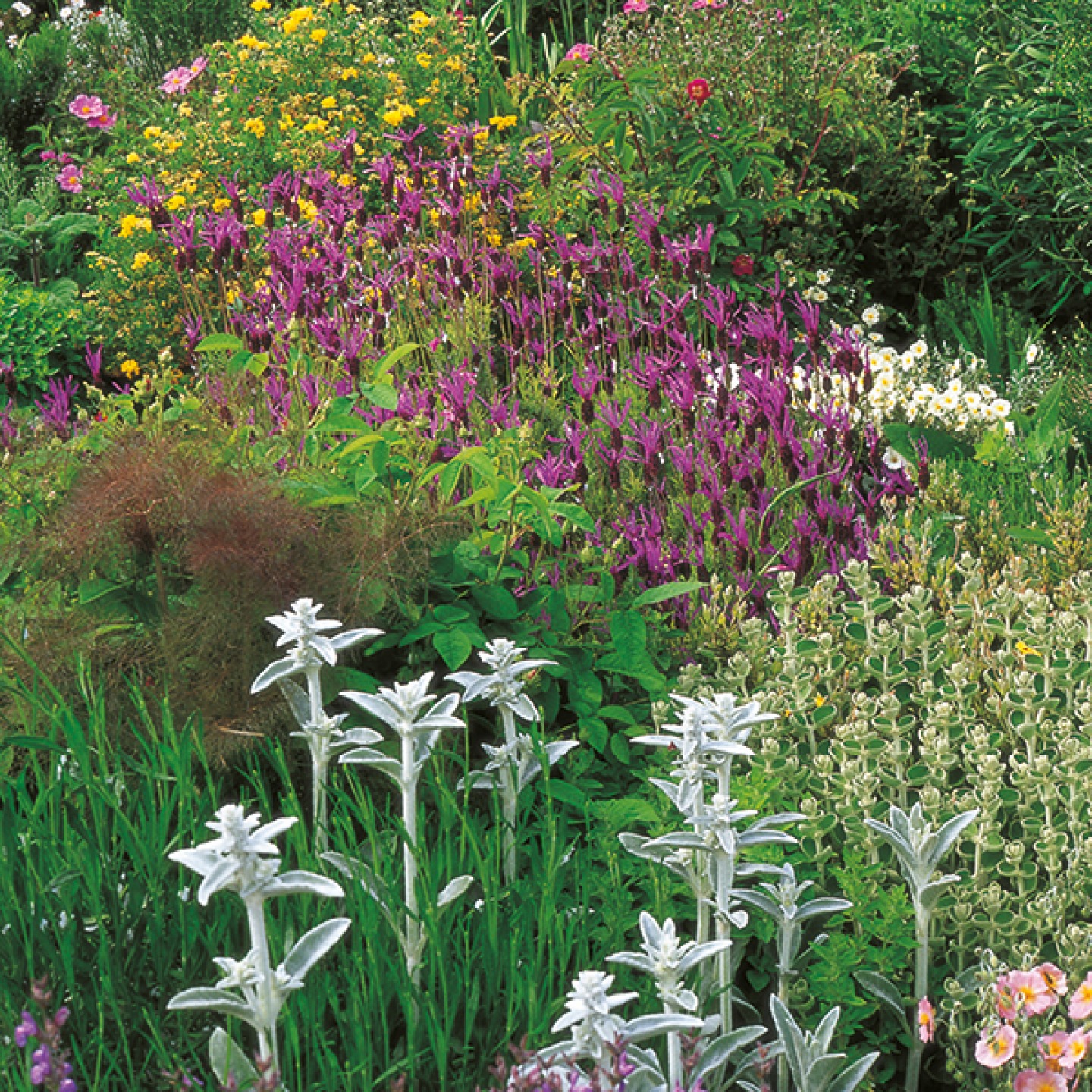
PLANTING MADE EASY
All you need to do to make a Mediterranean plant feel at home is the following: the procedure doesn’t vary. Stony soil provides the conditions for your plants to thrive in.
1 Make a planting hole, using a trowel or spade. The hole should be substantially larger than the rootball, so that the plant is not cramped.
2 Throw a handful of grit or gravel into the hole. Knock the plant out of its pot. If it has substantial roots, tease them out.
3 Ease the plant into place so that the top of the rootball is level with the surface of the soil.
4 Work the soil in around the plant, and firm in with clenched fists. Water well and add a 5cm/2in mulch of gravel around the plant base.
WHY MULCH?
Any kind of mulch – a thick coverlet over the soil – helps to keep moisture in the ground. Traditional herbaceous perennials benefit from a layer of well-rotted manure, and a seemingly inhospitable blanket of stones benefits Mediterranean plants, in several ways:
• A gravel mulch conserves moisture.
• It insulates plants in winter, and protects the crowns and rosettes of felty-foliaged plants from rotting.
• It absorbs heat, and the pale colour of the stones reflects the sun’s rays to the plant.
• It makes an attractive backdrop, showing flowers and foliage to advantage.
PLANTING DISTANCES
A gravel mulch makes the gaps between newly planted additions look not only acceptable, but positively attractive, unlike the gloomy blankness of bare earth. Where the temptation in the conventional border is to plant too closely in order to have as little bare soil as possible, the Mediterranean garden can be sparsely planted to start with; indeed it should be, because given optimum conditions, the plants will soon spread and sprawl. Shrubs can be planted singly, but to create a mat of thyme or sage, say, plant three small herb plants 23cm/9in apart, and they will quickly merge to make one substantial specimen. In the first year, if you want to fill a few gaps, interplant them with annuals such as borage and pot marigold.
WHEN TO PLANT
Autumn is traditionally the time for garden planting, but container plants can be planted at any time so long as the ground is workable. If you are planting a complete Mediterranean garden, or even a border, it is best to do so in spring, so that the young plants do not have to start life fighting a potentially cold, damp winter, but can get their roots down comfortably and, in many cases, still have time to build up flowers for the coming summer.
For areas of sparser planting, you might want to first lay landscape fabric under the gravel to prevent weeds and seedlings appearing. Because this fabric – heavy-duty black woven polypropylene – keeps out the light, plants do not grow through it. By cutting holes into it to make the planting pockets where you want them, you have complete control over your garden landscaping. Buy the best quality landscape fabric you can find. It’s not expensive, and is a worthwhile investment. Cheaper versions are less easy to manage and are thin enough to allow persistent plants to push through.
1 Lay the landscape fabric over the prepared bed and peg down all round the edge. Make criss-cross slashes at each point where you want a plant.
2 Fold back the four points of the fabric to give you a square large enough to plant in. Dig out the earth until the hole is the correct size for the rootball.
3 Set the plant in the hole in the usual way and fill in with soil. Water in. Ease the black liner back a little, leaving enough space for water to reach the plant.
4 When the planting is complete, cover the whole area with gravel to a depth of about 5cm/2in. If you want to add more plants after the gravel is laid, simply push it aside before cutting through the fabric.
CONTROLLING WEEDS
Before beginning a Mediterranean terraced garden, cover each bed with black landscape fabric in order to eradicate all the weeds, but make pockets here and there for the plants you want to settle straight away. One season will kill off annual weeds, but persistent perennials will take a year or longer1 Cut black landscape fabric to fit and securely peg down on to the terraces from autumn through to the following spring2 Preparation pays off; once the weeds are eliminated, and the plants are settled in, quick progress will be made in only one season.
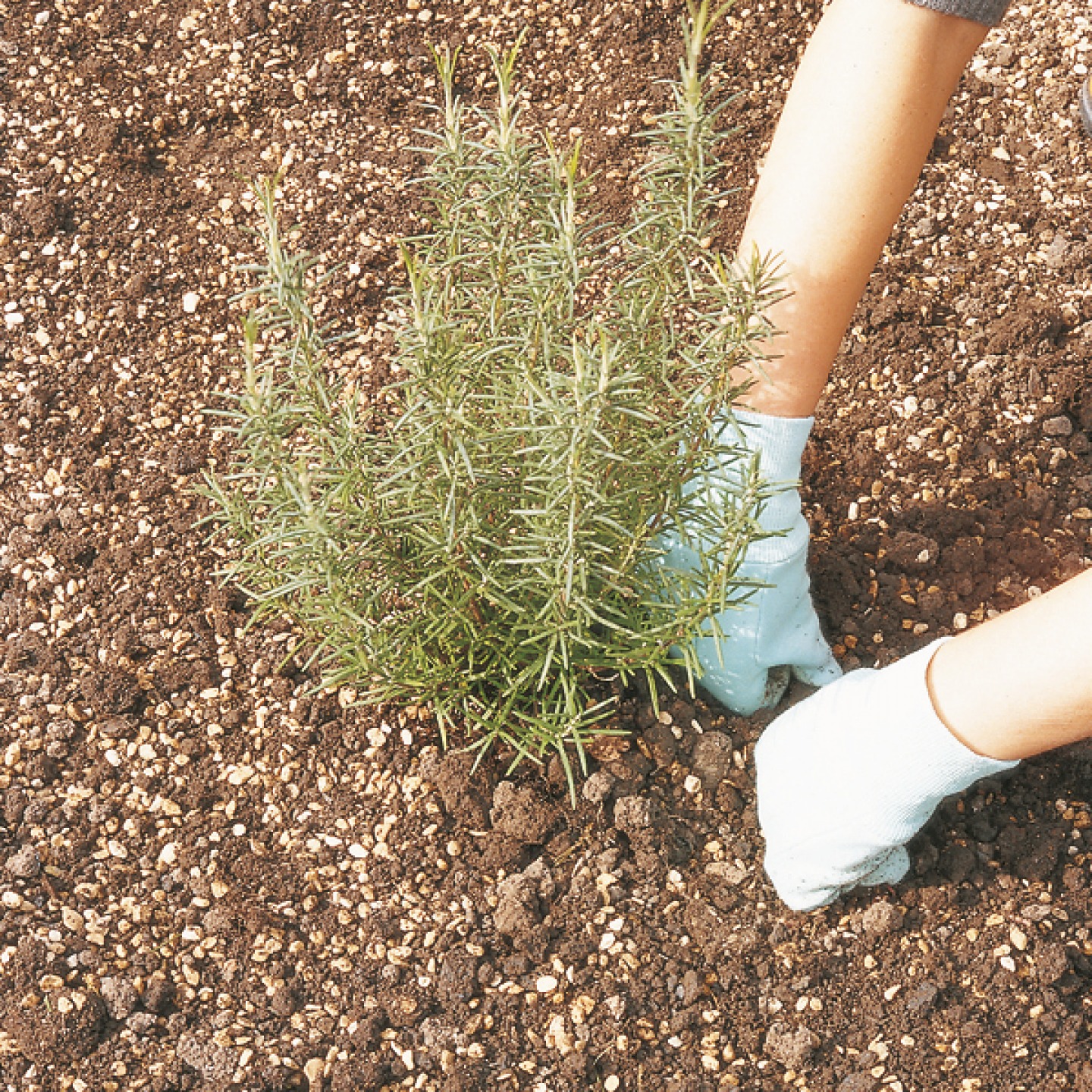
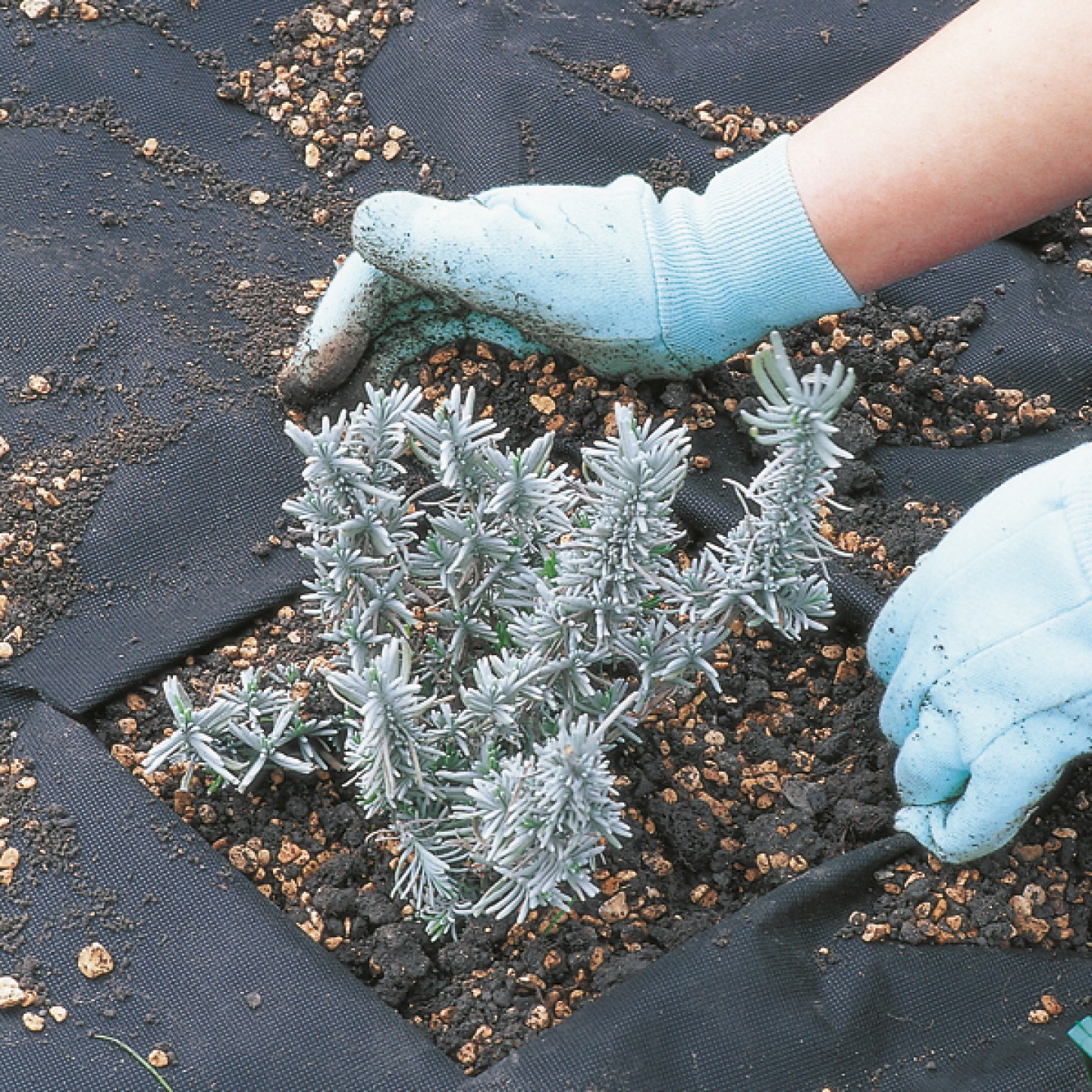

Create A Mediterranean Garden by Pattie BarronLorenz Books, 9780754835240 £15 UK